The monument was
first explored in 1813 but the findings were disappointing because of
previous incursions.
Nonetheless, these early explorers noticed that several uprights were
decorated, leading to the first real record of megalithic art in the
Morbihan, published by A. Maudet de Penhouet in 1814.
The decoration was frequently studied, but has since been broken up (at
least one major panel disappeared) (1). These studies provided the basis
for the definition of the "Pierres-plates style" which is thought to
characterize the Morbihan elbow tombs.
As in other elbow tombs,
walling is "mixed"; i.e. small stone-built panels contained between
megalithic uprights.
The mound which now covers the tomb is mainly the work of Z. Le Rouzic
who restored it in 1931. (1)
The Engravings:
Of 38 pillars, 13 are
carved with what is commonly referred to as anthropomorphic images.
Early explorers noticed
that several uprights were decorated, leading to the first real record of
megalithic art in the Morbihan, published by A. Maudet de Penhouet in 1814.
The decoration was frequently studied, but has since been broken up (at
least one major panel disappeared) (1). These studies provided the basis for
the definition of the "Pierres-plates style" which is thought to
characterize the Morbihan elbow tombs.
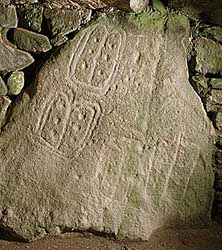

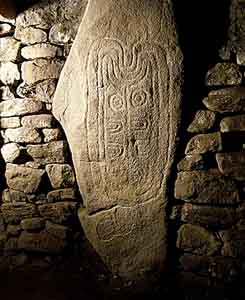
The 'Flat-stones:
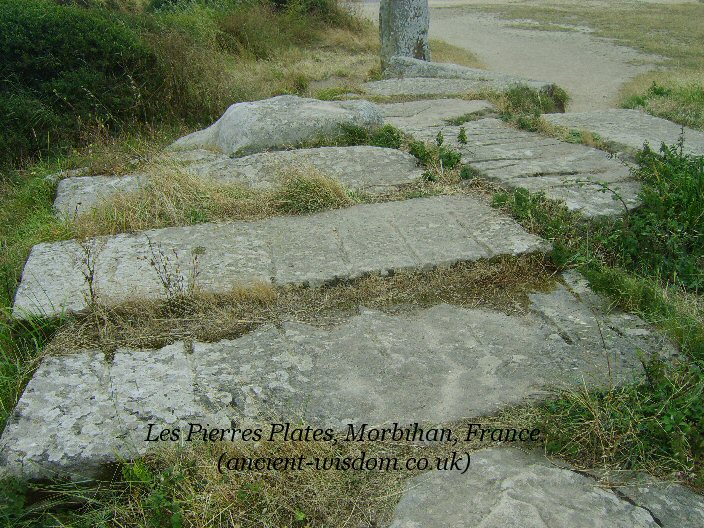
The top surfaces of
several of squared blocks of granite have what appear to be long drill marks
in them. These stones were probably added by Le Rouzic's restoration in
1931.
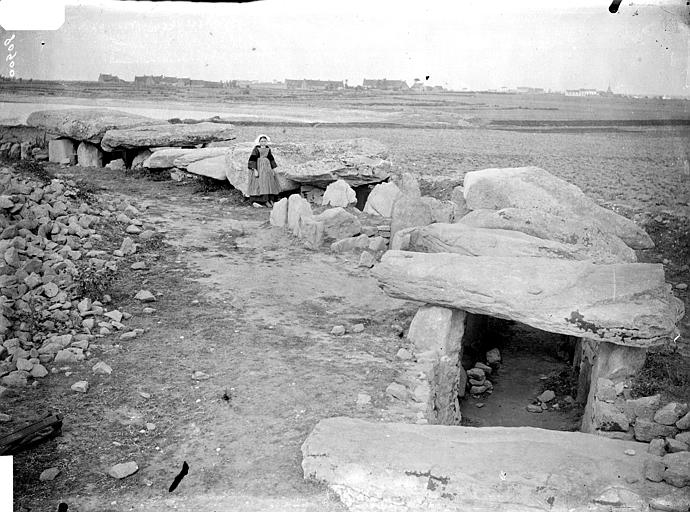
This early image shows
no such stones, suggesting that they were added by Le Rouzic.
(Photo credits: Ministere
de la Culture, France)
The 'Indicator' Pillar.
The menhir standing
at the entrance is a block that lay in front of the monument and was
erected here by Le Rouzic when he carried out the restoration work. Its
original role in the structure is not well known but it can be noted
that its eastern face carries a large number of cup-marks. It can be
seen in the following photo that the stone originally lay prostrate
directly across the front of the entrance, offering a clear possibility
that this was an original design feature.
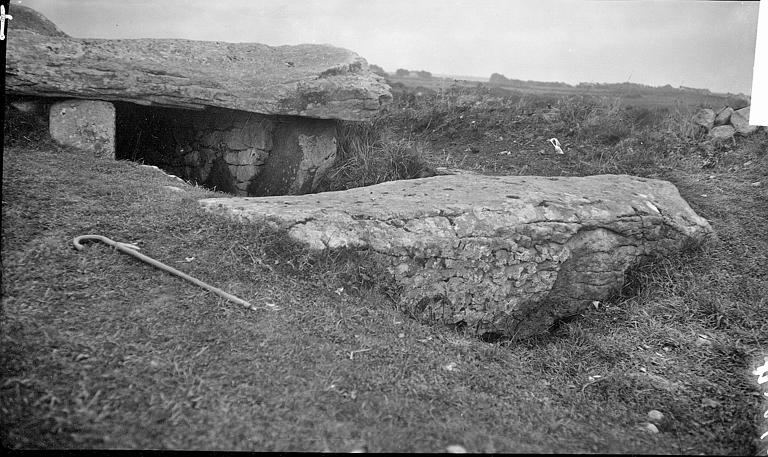
This early image shows
the 'Indicator' pillar lying across the entrance to the structure.
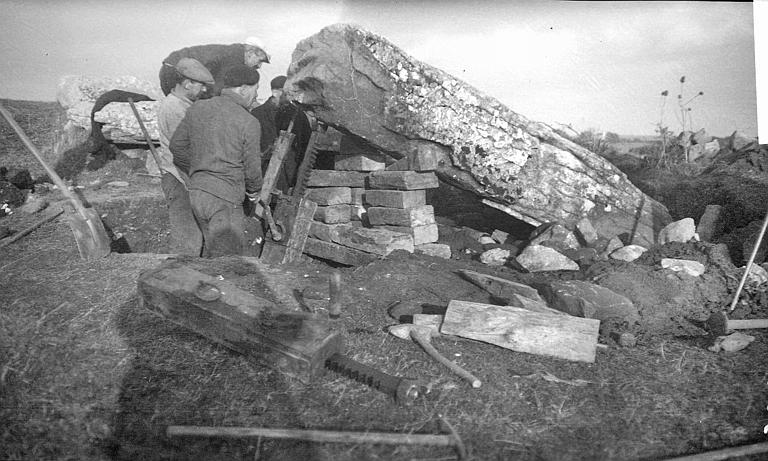
The 're-erection' of
the Indicator pillar.
(Photo credits: Ministere
de la Culture, France)
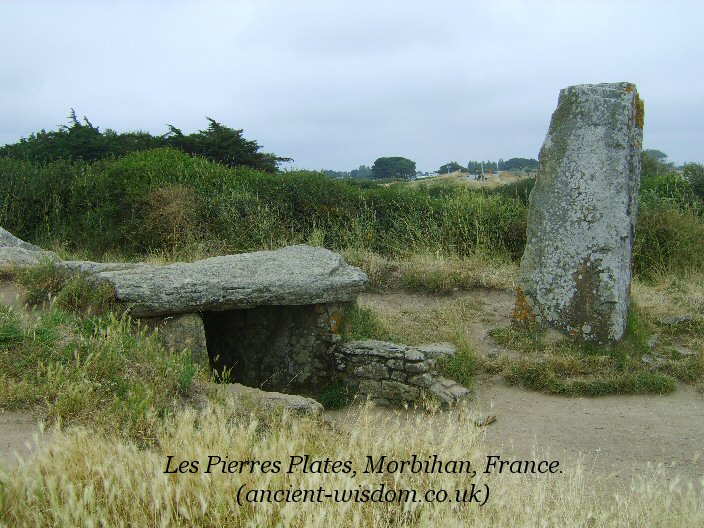
The 'Indicator' stone
now stands upright to the side of the entrance ...